Let me tell you about my new favorite thing: funnel.io.
Data modeling, pulling, and QA can put a serious damper on client hours and if something is broken or inaccurate, a simple task can become a huge headache.
Enter funnel.io.
They’ve already got data sources for most of the platforms marketers use on a daily basis and I can tell you first-hand that if there’s a platform they don’t support, their integration team will go to hell and back to create that custom connection for you!
Today, we’ll start with the basics of setting up your account and data sources.
Set Up Your Own Login For Funnel.io
Once you’re a Funnel customer, you’ll be able to set up your own login. This is something I highly appreciate because typically I work off MCC accounts which are teeming with accounts that I don’t manage. It’s nice to have a condensed view of everything you work on and if you need to share your data with your team you can invite them directly.
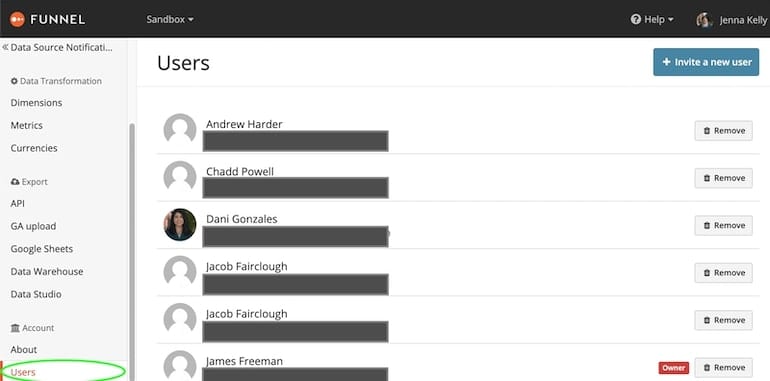
Adding Data Sources To Your Funnel
Adding data sources to your funnel is easy. I recommend creating a different Funnel group for each of your brands. Once you’re organized, navigate to the Data Sources menu on the left-hand menu and choose Add Data Source. You’ll be met with a pop-up with a search bar and quick buttons for available integrations.
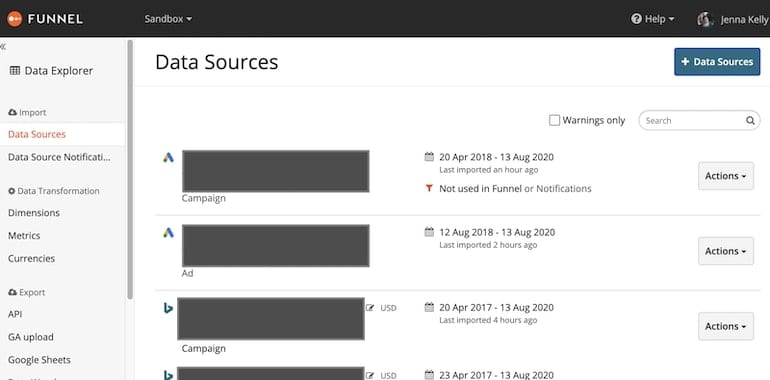
To build a connection, all you have to do is sign into the platform using Funnel’s on-screen app and select what type of granularity you’re looking for in the data pull. Don’t worry if you’re not sure at the moment. You can always reconfigure this setting later if you need, say, keyword-level data.
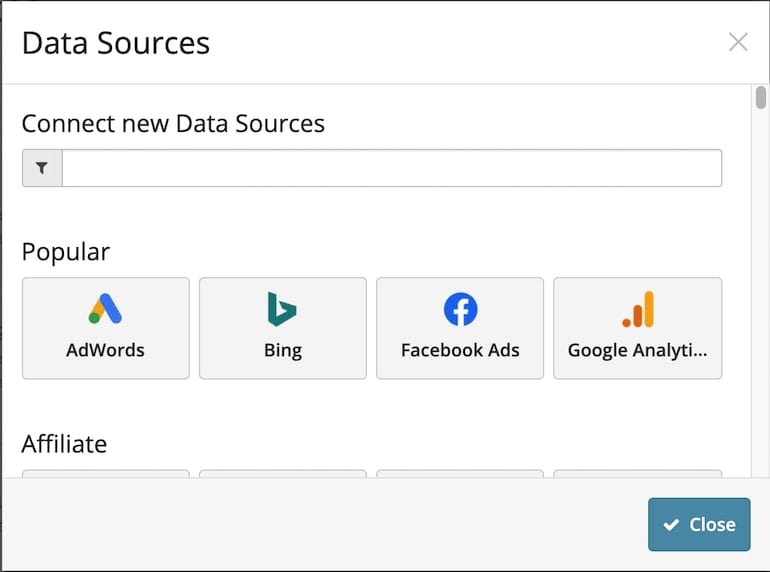
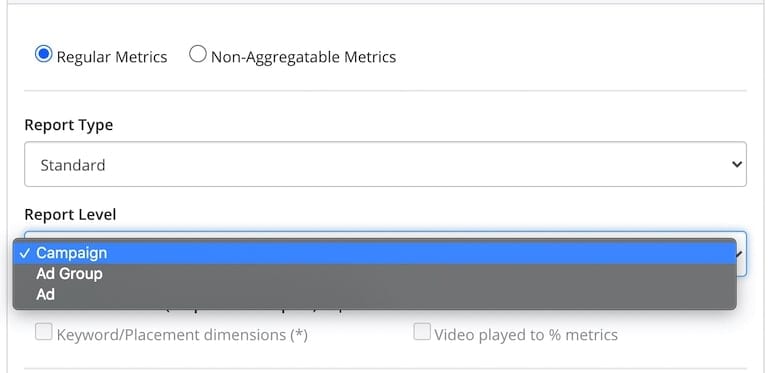
The Fun Stuff
Once you’ve got your data sources set up, you can go into the Data Explorer and start setting up your query. I love how clean and focused this setup is. I find that when I’m working in GSheets, it’s easy to get distracted by the formatting or the latest thing that I realize I broke because I was trying to manage my data and the report template at the same time.
Now, I set up my query in Funnel and export it to the GSheet of my choosing or forego GSheets all together and build my reports in Data Studio using Funnel as my data source! Everything under one roof instead of tab after tab of platform data. I also love how reliable the scheduled imports are. I haven’t had the issues I used to in having all but 1-2 queries refresh and throwing everything off.
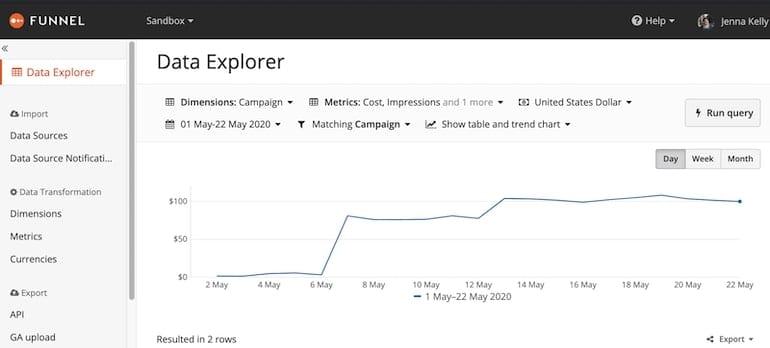
Other Funnel.io Notes
- Funnel support is top-notch. Don’t see the platform you want to pull data from? If that platform has an API, you can send a custom data source request to Funnel and they’ll reach out to you to get things started. They’re doing this for me right now with Spotify!
- They asked me what metrics I’m interested in pulling
- They asked for the API ID information I had available
- They connected with Spotify’s API team so I didn’t have to!
- If you find you need your data source to be more granular, it’s better to edit the data source vs. adding another version of it.
- Say, if you were pulling campaign-level data for Google Ads but you realized later that you also need to pull keyword-level data. If you created another data source for Google Ads that pulls keyword data, it’ll double-count cost, impressions, clicks, etc. because you’ve now added the account twice.
I’m excited to keep learning about Funnel and how it relates to Data Studio, GSheets, and reporting in general! Tune in next time for more tips and basics.



